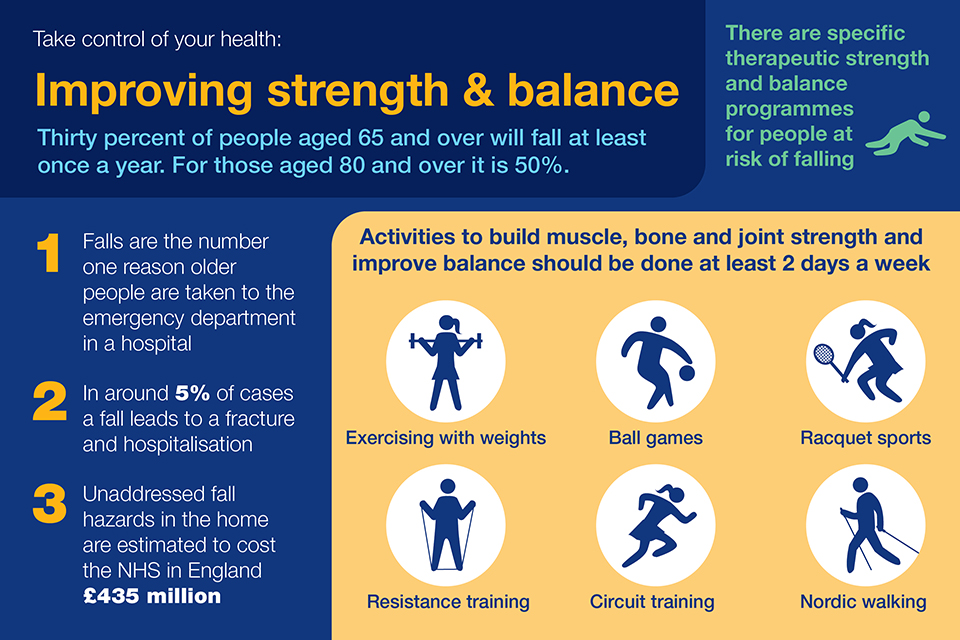Dementia Fall Risk Can Be Fun For Anyone
Dementia Fall Risk Can Be Fun For Anyone
Blog Article
The 10-Minute Rule for Dementia Fall Risk
Table of ContentsDementia Fall Risk - An OverviewThe Greatest Guide To Dementia Fall RiskDementia Fall Risk for DummiesDementia Fall Risk Things To Know Before You Get This
A fall threat assessment checks to see just how most likely it is that you will certainly fall. It is mostly provided for older grownups. The assessment normally consists of: This includes a collection of concerns regarding your general health and if you have actually had previous falls or troubles with balance, standing, and/or strolling. These devices check your stamina, equilibrium, and stride (the way you stroll).Interventions are recommendations that may decrease your risk of dropping. STEADI consists of three actions: you for your danger of falling for your threat factors that can be improved to try to avoid falls (for instance, equilibrium problems, impaired vision) to minimize your danger of falling by utilizing reliable strategies (for instance, supplying education and learning and resources), you may be asked numerous questions consisting of: Have you fallen in the previous year? Are you worried about dropping?
After that you'll take a seat once again. Your company will certainly examine how much time it takes you to do this. If it takes you 12 seconds or even more, it may suggest you go to greater danger for a fall. This test checks stamina and equilibrium. You'll being in a chair with your arms crossed over your upper body.
The settings will get harder as you go. Stand with your feet side-by-side. Move one foot midway forward, so the instep is touching the huge toe of your other foot. Relocate one foot fully before the other, so the toes are touching the heel of your various other foot.
Dementia Fall Risk Fundamentals Explained
The majority of falls take place as a result of numerous adding aspects; consequently, managing the danger of dropping starts with identifying the variables that add to fall threat - Dementia Fall Risk. Several of the most pertinent risk factors include: Background of prior fallsChronic medical conditionsAcute illnessImpaired gait and equilibrium, lower extremity weaknessCognitive impairmentChanges in visionCertain high-risk drugs and polypharmacyEnvironmental variables can likewise increase the danger for drops, including: Poor lightingUneven or harmed flooringWet or slippery floorsMissing or damaged handrails and get hold of barsDamaged or incorrectly equipped tools, such as beds, mobility devices, or walkersImproper use assistive devicesInadequate supervision of the people living in the NF, including those who show aggressive behaviorsA successful fall danger administration program needs a comprehensive clinical evaluation, with input from all members of the interdisciplinary team

The treatment plan should additionally consist of interventions that are system-based, such as those that advertise a risk-free setting (suitable illumination, handrails, order bars, and so on). The efficiency of the interventions need to be examined occasionally, and the care strategy modified as essential to mirror adjustments in the fall danger analysis. Carrying out a fall risk management system have a peek at this site using evidence-based finest technique read more can decrease the prevalence of falls in the NF, while limiting the capacity for fall-related injuries.
An Unbiased View of Dementia Fall Risk
The AGS/BGS guideline recommends screening all grownups aged 65 years and older for autumn threat yearly. This screening includes asking patients whether they have actually fallen 2 or more times in the past year or looked for clinical focus for an autumn, or, if they have actually not dropped, whether they feel unsteady when strolling.
Individuals who have actually dropped once without injury must have their equilibrium and stride assessed; those with stride or equilibrium irregularities ought to receive extra assessment. A history of 1 fall without injury and without gait or balance issues does not call for further assessment beyond continued annual loss danger testing. Dementia Fall Risk. An autumn threat analysis is called for as component of the Welcome to Medicare examination

The Buzz on Dementia Fall Risk
Recording a falls history is one of the quality indicators for fall prevention and management. copyright drugs in particular are independent forecasters of drops.
Postural hypotension can typically be eased by lowering the dose of blood pressurelowering medications and/or quiting medicines that have orthostatic hypotension as a side impact. Use above-the-knee support hose and resting with the head of the bed raised might also reduce postural reductions in blood stress. The preferred components of a fall-focused physical exam are revealed in Box 1.

A Pull time higher than or equal to 12 seconds suggests high autumn threat. Being not able to stand up from a chair of knee elevation without making use of one's arms indicates raised loss danger.
Report this page